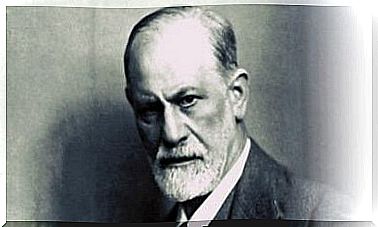Influence From The Three Degrees Of Influence Theory

In recent years, there have been many studies that have focused on how people are influenced. The three degrees of influence theory are one of them. This is a very interesting theory that makes us think about the effects that what we say and do has on others.
A while ago, something called the six degrees of separation theory arose, which meant that we are separated from the human front figures by a maximum of six degrees. In other words, each of us knows someone who knows someone else, who knows someone else, who knows someone else, who knows someone who knows Donald Trump.
The three degrees of influence theory are somewhat similar, but it has a stronger effect in our lives. This theory was developed by Nicholas Christakis and James Fowler in 2010. It shows that no matter how separated we are from others, we are never isolated.
According to Christakis and Fowler, what we say and do will influence our friends ‘thoughts and behaviors (first degree) and our friends’ friends (second degree) thoughts and behaviors, and the thoughts and behaviors of our friends ‘friends’ friends (third degree).

How did they come to that conclusion? In 2007, these researchers participated in a study related to cardiovascular disease, which began in 1948. This study was conducted in Framinghamn, USA. Two thirds of the adult population participated in it and also their children and grandchildren.
Each participant was given a list of relatives, friends, neighbors and co-workers. Many of these individuals had participated in the study from an early age. This data allowed them to create a network of relationships between the participants.
After the study was completed, 50,000 links were defined between the participants. The researchers began comparing data regarding the participants’ style and quality of life. They wanted to know if changes in one member of the social network had any effect on the other members.
The study included, for example, obesity. Christakis and Fowler wanted to find out if a person’s obesity had an impact on their social network, and if the other members then also suffered from obesity. They came to shocking results.
They concluded that if a member of the network was obese, the person’s friends were at a 45% risk of also being obese. Friends of friends ran 20% risk, and friends of friends of friends ran 10% risk. No influence beyond the third degree could be observed. That is how this theory was established.
The researchers’ conclusion was that other behaviors such as smoking would also have the same effect as obesity. The three degrees also applied in this case. The opposite effect also applied. If someone in the social circle lost weight or stopped smoking, this had a similar effect.
Both Christakis and Fowler, as well as other researchers, managed to show that this also applies to attitudes and feelings. For example, those who are friends with lonely people also tend to feel lonely. Something similar also happens with happiness, willingness to cooperate, alcohol consumption and all other behaviors and attitudes.
The researchers were also surprised when they saw that celebrity behaviors had no influence on how people behaved. If a celebrity decided to start losing weight, this would have no effect on the celebrity’s followers. But if your friend, on the other hand, had done so, this would have affected you.

According to the three degrees of influence theory, we are not isolated, and everything we do will have an effect on others around us in one way or another. It also says that if we want to achieve change, we must start with ourselves. This will then spread and lead to the change that so many want to achieve.








